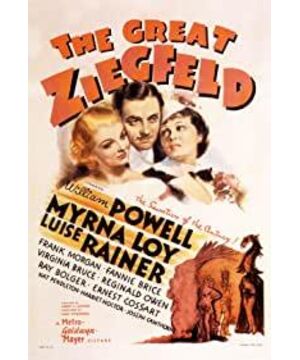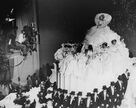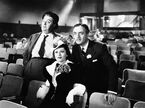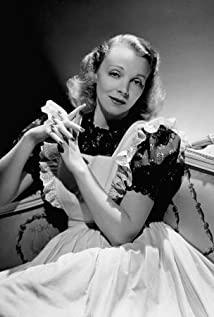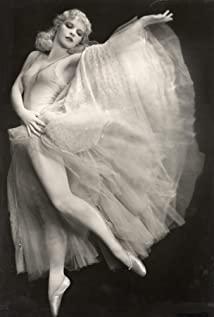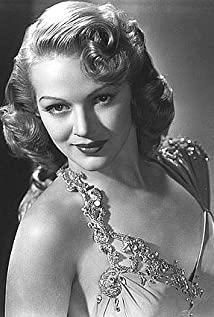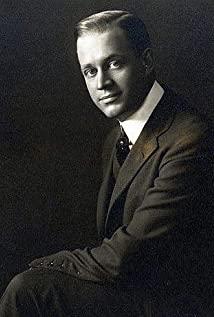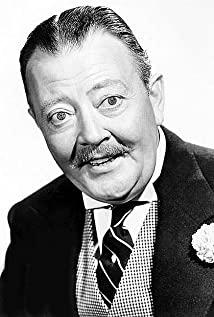As mentioned in the movie, Ziegfried’s father was the founder of the Chicago Conservatory of Music; but what was not mentioned in the movie (intentionally) was that he also opened a nightclub at the Chicago World’s Fair in 1893, and it was unsuccessful. At the beginning of the film, Zieg Feizi inherited his father's business and grabbed business with others.
Siegfried's first wife (whether it is in doubt) is Anna Held, a French actress who is already well-known in Europe. The two met in London, Ziegfeld invited her to New York to develop and build momentum for her by creating (fake) news and other methods. Anna suggested that Ziegfeld imitate the goddess amusement hall in Paris to launch large-scale performances featuring gorgeous costumes, grand ostentation and exoticism, and this was the later Ziegfeld Follies (Ziegfeld Follies). Anna herself was the top card, while Ziegfei continued to use gossip messages such as milk bath and other high-profile hype, so that their careers were soaring. But as shown in the movie, Anna couldn't bear Ziegfei's twists and turns and left; she had hoped that he would change his mind, but Ziegfei's remarriage made her desperate. At this time, World War I broke out, and Anna shifted all of her energies to charity performances and fundraising for the country. In poor health, she eventually fainted on stage due to overwork, and then died of illness at the age of 46.
After having a brief relationship with Lillian Lorraine, who was popular with him (the unspoken rule?), Ziegfei married actress Billie Burke and had a daughter. Siegfried had been dead for 4 years at the time of the filming, and it was Billie's nodding and supervision that made this biographical film. In the film, Billie is a typical good wife and mother who took out gold and silver jewelry to make her husband come back. In reality, she is also well-deserved. After Siegfei's death, she repayed her husband by joining the film industry and was even nominated for an Oscar.
From the Hercules Eugen Sandow, known as the "father of bodybuilding", to the Ziegfeld girl who leads the fashion gentleman, Ziegfeld girl; from the luxurious and majestic Ziegfeld Follies to the bloody Show Boat adaptation of the novel; Nian is always at the forefront of trends and reforms. He was the spokesperson of an era, and it also ended with that era-in 1932, after the stock market crash and economic depression, the "glorifier of the American girl" (the glorifier of the American girl) Ziegfei passed away at the age of 65.
This film can be said to portray Ziegfei's image very great. He is optimistic and humorous, wise, tireless, passionate and infatuated, innovative and nostalgic. He has a good way of playing MM, and his staff are loyal to him. Although he is accustomed to twisting the flowers to make his wife run away, even if he is separated, he still misses him; even if he likes to pry into the corner or even unscrupulously, but even the fool himself (fictional character) is willing to end up sick and complain. The subtext of spending big money is to be generous, and ordering is to show quick thinking; several bankruptcies are for several rebounds, and the short-term sinking is the foreshadowing of wanting to suppress. His fame and achievements, his charisma, seem almost perfect. This is not so much a tribute to him, as it is Hollywood's nostalgia for that era.
The film is more than three hours long and has an investment of more than 2 million. It can be called a masterpiece. In fact, Universal bought the shooting rights from Ziegfeld’s widow, Billie Burke, but later found that the project was too large and sold it to MGM. As a result, it became the latter’s best film Lianglianzhuang (the first in history). Once), and a box office income of 40 million yuan. In all fairness, the film’s narrative is leap, and some characters and clues exist for existence, lacking integrity and coherence. Coupled with the protagonist of Gao Daquan mentioned above, this kind of biographies can only be regarded as average. As for the popular stage shows in the film, they are indeed exquisite and beautiful enough; but if they can't be integrated with the plot, the showy performance can only be reduced to an embellishment that is better than nothing.
The film won 7 nominations for Best Picture, Best Director, Best Screenplay, Best Editing, Best Actress, Best Art Director, and Best Choreographer at the Ninth Oscars. In the end, in addition to getting the best picture, the German actor Luise Rainer, who played Siegfried’s first French wife, won the best actress with a heartbreaking phone call in the film (as of August 2013, the first two The Oscar-winning Hollywood legend is still alive, at the age of 103 years old), and the breathtaking revolving cake-like stage composed of two long shots-Ziegfeld Follies' theme song "A Pretty Girl Is Like a Melody" Won the best choreography (only three Oscars include this award).
The famous screen couples William Powell and Myrna Loy in early Hollywood continue to play husband and wife in the film. The former played Ziegfeld again in MGM's 1946 all-star movie "Ziegfeld Follies", and the latter played Ziegfeld's second wife Billie Burke in this film-Billie actually wanted to act himself , But the company thinks she is not well-known. In addition, the singer Fanny Brice and the tap dancer Ray Bolger, who once participated in the Siegfried Sing and Dance Ensemble, both played themselves and performed in the film.
View more about The Great Ziegfeld reviews


